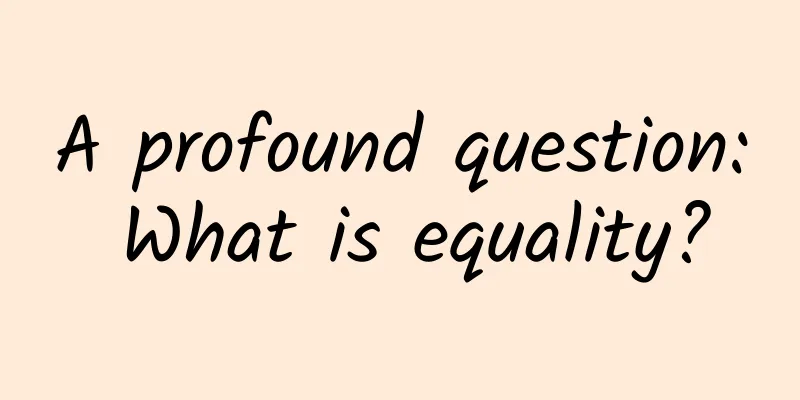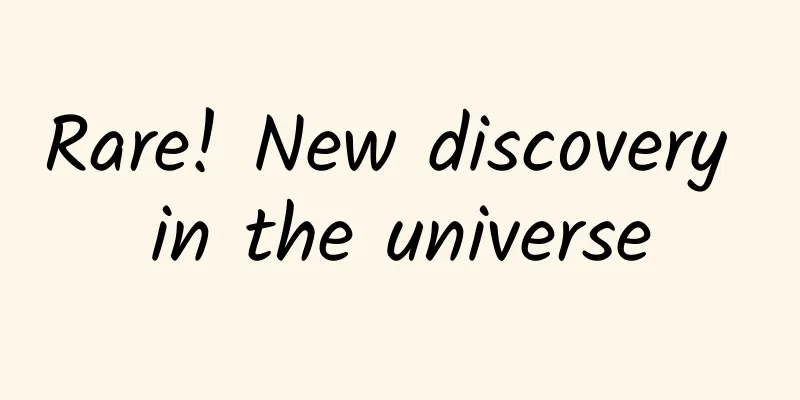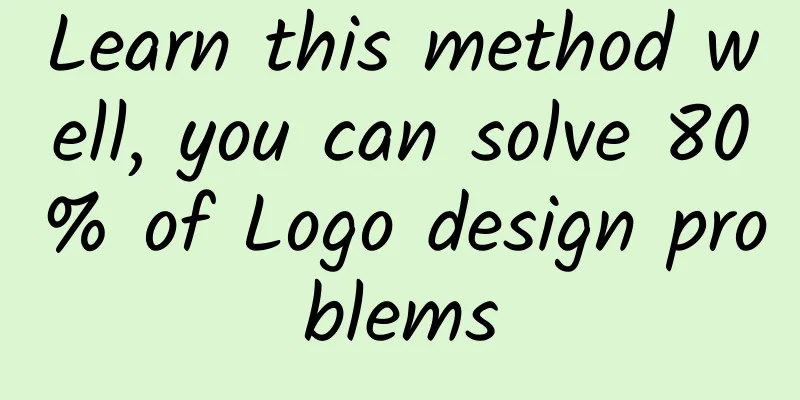A profound question: What is equality?

|
Before we really get into mathematics, our parents' education and life experience have already made us understand the concept of equality, and this understanding will accompany us throughout our lives. However, mathematical equality has a deeper connotation, especially in some specific problems. Mathematicians no longer only focus on whether numbers are equal, but consider whether mathematical structures are equivalent, and even higher-order equality. In order to more conveniently discuss the equivalence of higher-order categories, mathematicians have also proposed new mathematics. Written by Ye Lingyuan When are two mathematical objects equal? This question is not as trivial as it seems. In fact, almost all problems in mathematics ask whether two mathematical objects are equal. This article is obviously not intended to solve a practical mathematical problem, but to discuss the development of the concept of "equality" in modern mathematics. Back in the late 19th century, philosopher Gottlob Frege (1848-1925) believed that when we write down an equation A=B, A and B are symbols of the real mathematical objects we want to represent, and equality means that the real mathematical objects referred to by these two names are consistent. In other words, the equality relationship is a relationship between the mathematical symbols we use. Two symbols exist in an equality relationship if and only if the real mathematical objects they refer to are the same. In this way, it is easy for us to understand mathematical statements such as 2+3=5. However, with the development of modern mathematics, equality understood in this way does not always truly reflect the issues that mathematicians are concerned about. In the past decade or so, under the guidance of some mathematicians and logicians, we have had a conceptual innovation on the most basic concept of equality. Just as Newton and Einstein's innovations on the most basic concepts of gravity and space-time in physics brought about a new physics, this article wants to talk about how the innovation of the concept of equality in mathematics can bring about a new kind of mathematics. Number of categories Perhaps different from philosophical discussions, if we want to get a concept of equality that is useful for modern mathematics, we should always start from the mathematical problems we are concerned about, rather than predetermining a concept of equality and then expecting all mathematicians to express their ideas in the set of conceptual languages we have defined. This section wants to explain that for different mathematical objects, the equality problems we are concerned about may be different. One way to classify mathematical objects is the so-called category number. The category number can be any number from zero to infinity. The size of the category number does not necessarily represent the complexity or richness of the structure of the mathematical objects within it, but rather represents that the equality issues we care about for mathematical objects of different category numbers are different. In the following description, we will call an object with a category number of n an n-structure. Category number 0 0-structures, that is, mathematical objects with a category number of 0, are most typically numbers, such as natural numbers, rational numbers, real numbers, etc. For two numbers, or 0-structures, the equality relationship between them is familiar to us, that is, whether the two numbers are the same. Many very profound mathematical theorems are concerned with whether two numbers are equal, and this is also the most common concept of equality we encounter in mathematics. Category number 1 With the development of modern mathematics, we are not only concerned with numbers, but also more general mathematical structures, such as algebraic objects, groups, rings, fields; or geometric objects, such as manifolds, etc. For such objects, mathematicians do not really care whether two written groups are equal (in a general sense), but whether there is isomorphism between them. In a sense, the simplest 1-structure is a set, and they can be seen as mathematical structures with trivial structures. For sets, people usually care about whether two sets are isomorphic, not whether the two sets have exactly the same elements. For example, when we say that the Cartesian product between sets is commutative and associative, it does not mean that A×B is really equal to B×A, because according to the construction of set theory, these are two different sets. However, they are isomorphic. Category number 2 Perhaps surprisingly, the world of mathematics is not limited to mathematical objects with category numbers 0 or 1. For those who have been trained in classical mathematics for a long time, it may not be easy to imagine what mathematical objects are one order higher than the category number of mathematical structures. But we can make guesses through recursion. The simplest 1-structure is a set, and a set is a mathematical object consisting of some 0-structures, i.e., elements. It can be inferred that the simplest type of 2-structure can be understood as a class consisting of some 1-structures, such as the class consisting of all sets, the class consisting of all groups, the class consisting of all manifolds, etc. These objects are usually called a category. More strictly speaking, a category consists of a class of mathematical objects and the mappings between them. In the category of sets, the objects are sets, and the mappings between sets are functions; in the category of groups, the objects are groups, and the mappings between groups are group homomorphisms. So what is 2-structure, that is, the equivalence between categories? To show that answering such questions makes sense, here is an example of learning linear algebra. Usually when we study linear algebra in college, we first learn about matrix operations. A matrix is a square matrix composed of some specific numbers, and matrix operations (addition, multiplication, etc.) have very specific operation rules. When we study linear algebra more deeply, we will find that linear algebra can be completely expressed in an abstract mathematical language: a linear space can be defined as an algebraic structure with certain operations on it, and a linear mapping between linear spaces can be defined as a function that satisfies certain algebraic conditions. At first glance, there is no particularly direct relationship between matrices and linear spaces. However, anyone who has studied linear algebra knows more or less that for (finite-dimensional) linear spaces, studying matrices is equivalent to studying abstract linear spaces. But usually this statement does not appear in the classroom in the form of a strict mathematical theorem. Generally speaking, it is just an impression obtained after learning these two representations, that is, any problem about matrices can be transformed into a problem about linear spaces, and any problem about linear spaces can also be transformed into a problem about matrices, and in these mutual transformations, the answers obtained should be consistent. However, this is only a non-rigorous statement. Is there a way to use rigorous mathematical language to show that these two mathematical statements are equivalent in a strict sense? Note that this equivalence is intuitively the equivalence between two 2-structures: we are asserting that studying objects such as matrices is equivalent to studying objects such as finite-dimensional linear spaces. Therefore, in the next section we will introduce the equivalence between objects with a category number of 2 or even higher. Equivalence between higher-order categorical number objects As mentioned above, in order to strictly describe the equivalence of matrices and linear spaces, we must realize them as two categories, so that the equivalence between them can also be understood as the equivalence between two categories. Equivalence in the New Mathematics The development of modern mathematics has made mathematicians increasingly aware that higher-order mathematical objects and their equivalence are very important mathematical concepts, and that studying higher-order structures is sometimes essential to understanding complex low-order structures. Due to space limitations, this article cannot provide a comprehensive introduction to the application of higher-order structures in mathematics. But after the previous explanation, we can at least understand that for different mathematical objects, mathematicians are concerned with different equivalent forms. In a sense, this poses a new challenge to the so-called "foundations of mathematics". After all, equality is such a fundamental mathematical concept, but the existing mathematical foundations based on set theory are very cumbersome in dealing with equality between higher-order objects. If we want to use higher-order mathematical objects very conveniently for subsequent mathematical research, we obviously need a more direct way to deal with the equality between arbitrary mathematical objects. In the past decade, a mathematical foundation inspired by homology theory has developed very rapidly, called the Univalent Foundation[1]. This new mathematical foundation has many different features. Here we will briefly introduce how it deals with the equivalence between mathematical objects. Conclusion Of course, this article is introductory in nature, and some details need to be more accurately expressed to be formalized into rigorous mathematical content. However, I hope this article can make everyone think more about the seemingly very ordinary concept of equality in mathematics. After all, I believe that the real great progress in theoretical science comes from the innovation of concepts. These works may not be the most impressive in terms of technology, but they must be the works that have the most profound impact on human thought. References [1] The Univalent Foundations Program. Homotopy Type Theory: Univalent Foundations of Mathematics. http://homotopytypetheory.org/book, Institute for Advanced Study, 2013 [2] See mathematician Vladimir Voevodsky’s 2011 presentation at the Institute for Advanced Study in Princeton: This article is supported by the Science Popularization China Starry Sky Project Produced by: China Association for Science and Technology Department of Science Popularization Producer: China Science and Technology Press Co., Ltd., Beijing Zhongke Xinghe Culture Media Co., Ltd. Special Tips 1. Go to the "Featured Column" at the bottom of the menu of the "Fanpu" WeChat public account to read a series of popular science articles on different topics. 2. Fanpu provides a function to search articles by month. Follow the official account and reply with the four-digit year + month, such as "1903", to get the article index for March 2019, and so on. Copyright statement: Personal forwarding is welcome. Any form of media or organization is not allowed to reprint or excerpt without authorization. For reprint authorization, please contact the backstage of the "Fanpu" WeChat public account. |
<<: Do foods labeled “0 calories” really have no energy at all?
>>: Why do pufferfish become round and puffy like balls? Is it really because they are angry?
Recommend
There is a mahjong table in the train, where you can play cards and sing karaoke? Here comes the response!
Recently, in Xi'an, a video of "playing ...
A 52-year-old woman has suffered three fractures in three years. What is the reason? What should you do in winter to be a "hard bone"
My classmate's aunt is 52 years old, looks ve...
Super Fans Pass Advertising Steps
1. Overview of the Delivery Platform Super Fans L...
How to build an activity operation framework in 4 steps?
In this article, the author will explain how to e...
How does Tik Tok make money? Detailed explanation of Douyin operation and traffic generation strategy!
Many people may now ask: Can Douyin continue to o...
Tesla will announce Q2 delivery volume, market expects 80,000 to 90,000 vehicles
As usual, Tesla will release its second quarter c...
I don't have to worry about breast cancer because no one in my family has had it? Is breast cancer a terminal illness? The truth is...
With the improvement of living standards and heal...
Peach gum has become the new favorite of Internet celebrity sweet soup, will it become milk tea 2.0?
Have you ever seen translucent colloids like &quo...
The Hengduan Mountains glaciers are precious because they are rare.
01 What is a glacier? Glaciers are a type of land...
Analyze the user life cycle and improve app engagement
When your app has acquired a certain number of us...
Virtual Reality Video
[[155219]] Beijing time, November 6th morning...
Android uses JobScheduler to perform background tasks
JobScheduler Introduction JobScheduler is used in...
Typhoon "Little Dog" + cold air, be careful on your return trip!
As the holiday draws to a close, precipitation in...
Practical experience sharing on Xiaohongshu operation and promotion
As of January this year, Xiaohongshu has more tha...
Geely Auto Financial Report: Geely's total revenue will reach 240.2 billion yuan in 2024, a year-on-year increase of 34%
Geely Auto released its 2024 and Q4 financial rep...









